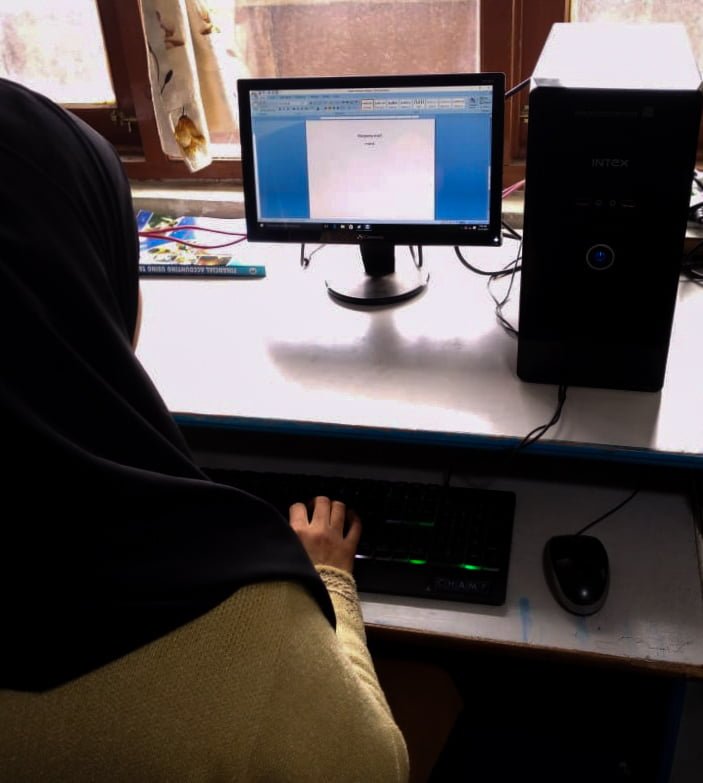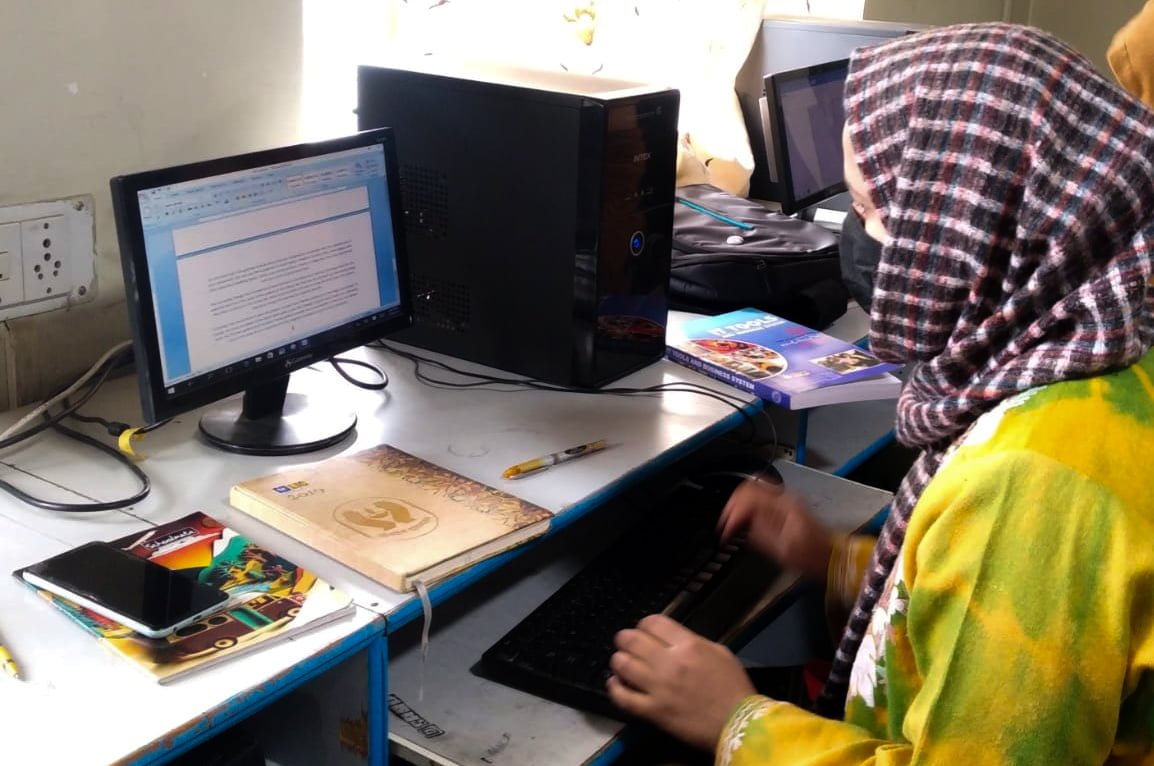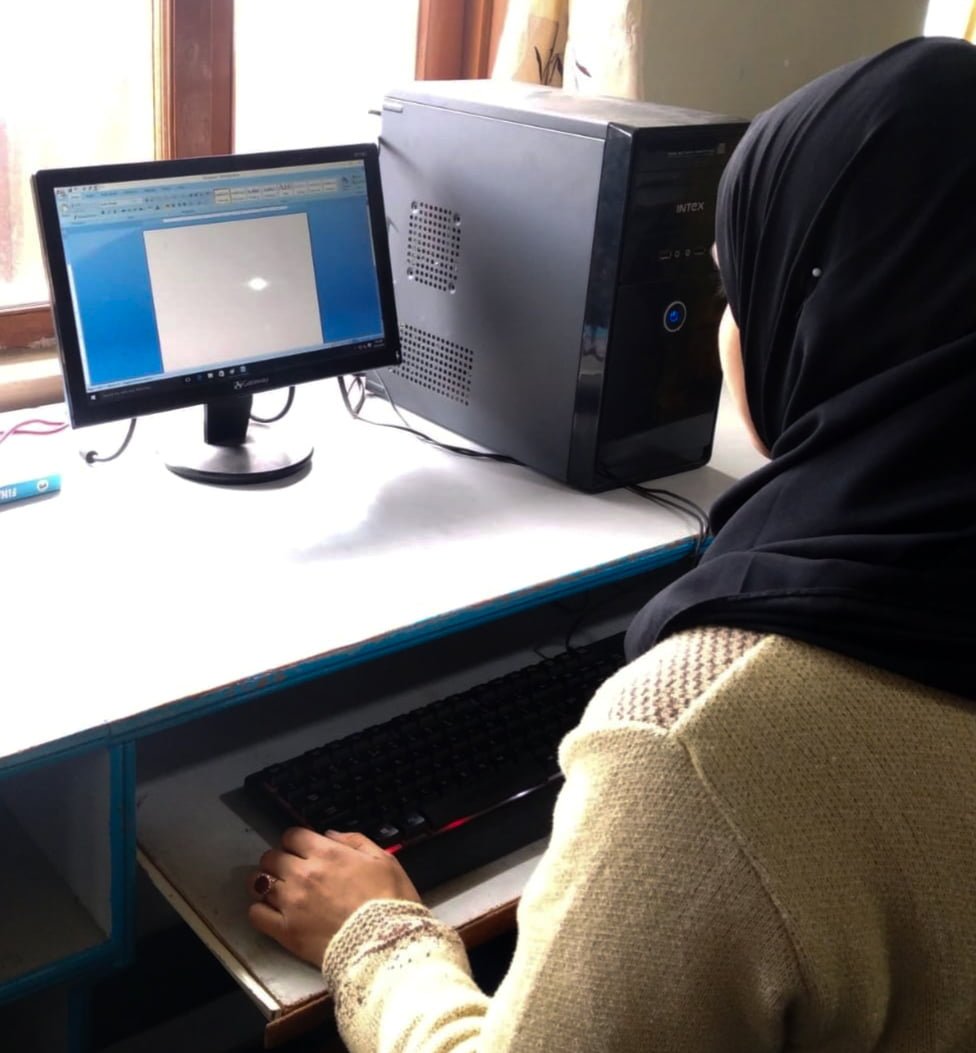‘Every single person in Kashmir believes that girls should only pursue subjects related to the arts. While most parents encourage their children to seek careers in medical fields, I had a strong desire to pursue a career in STEM. I therefore set off on my journey full of dreams and newfound hope. But things turned out very bad when a teacher commented with a pretty spooky laugh, ‘cxay kem wonnay engineering karin, cxay pazhi arts subject ratun.’ (Who told you to pursue computer science engineering; You should have pursued an arts subject.), when I failed my first attempt to solve a technological problem. That was the moment, when I felt terribly discouraged and my face fell as every other student was staring at me with a mocking look in their eyes,’ said Ulfat, who completed her bachelor’s degree in computer science, despite facing many challenges in her journey, and only left this profession after realising that Kashmir had very few job opportunities in the STEM fields especially for women.
‘While most parents encourage their children to seek careers in medical fields, I had a strong desire to pursue a career in STEM.‘
Ulfat
Ulfat’s experience is similar to the challenges that many ambitious women in the area face and it also highlights the systemic challenges that Kashmiri women face when pursuing careers in STEM.
Cultural biases and societal perceptions
Kashmir, like many places around the world, also faces a big problem when it comes to having enough women in STEM jobs. The situation gets even worse in Kashmir because there aren’t many job chances for women in STEM fields which reflects that women in Kashmir who want to work in science, technology, engineering, or maths find it hard to get jobs. This lack of opportunities makes the gap between men and women even more noticeable in Kashmir, just like in many other parts of the world.

Tanzeela Zargar, a digital marketing executive and a web developer by profession said, ‘The field of computing and technology is predominantly occupied by males, despite the fact that both genders share an equal love for technology. While girls take pleasure in possessing the latest gadgets, there exists a societal perception that they lack an interest in understanding the intricacies of building or assembling these technologies.’
She further added, ‘This gendered message begins early in childhood, where boys are encouraged to engage with computer games and familiarise themselves with technology, while girls are often directed towards toys related to makeup, dolls, and fashion. This ingrained bias subtly influences societal thought patterns.’
According to a research published in The Wire, women made up 19.4% of India’s labour force in 2021–2022, down from 29.8% in the year prior. Men made up 80.1% of the population in 2020–21 and 80.7% in 2021–22, reflecting a striking difference. Studies have indicated that when it comes to spatial skills—which are thought to be crucial for success in engineering and other related fields—men do better than women.
Personal experiences of women in STEM
However, some women have overcome challenges to succeed professionally and serve as inspiration for others. One such individual is Saifa Shabir, an experienced professional with over 10 years of expertise in web development and graphic design. Currently, she serves as the CEO of her own company, Red Brushes, where she, along with her team, designs content for customers overseas.
Saifa, while sharing an anecdote, mentioned that there was always a barrier between her male classmates and her when she was pursuing her BSc in IT from SP College, Srinagar.
Saifa, while sharing an anecdote, mentioned that there was always a barrier between her male classmates and her when she was pursuing her BSc in IT from SP College, Srinagar. ‘I also worked as a graphic designer. They would often say to me, ‘Cxe kyazi ye course karaan cxay te yath karas seat keam kya, ye chu soun kaar, cxe haych syun ranun te safayi karin’ (Why are you doing this course? There is no connection between you and this work; it’s our field. You should go and learn household chores).’

She further said, ’Although entering a male-dominated field was challenging, my mother’s continued support kept me going. Currently, we are supporting various companies and expanding. I strongly believe that determination overcomes obstacles. Despite technological advancements, gender discrimination still persists. However, it’s time for women to take control and bring about positive change.’
Another woman is Humaira Sadiq, who is a seasoned professional in graphic design and front-end development with years of experience. She shared her journey, emphasising the significance of skills and overcoming challenges in the tech industry. She highlighted, ‘If you possess skills, nothing should hinder your progress in life.’
Reflecting on her past experiences, Humaira said, ‘In my previous company, as a graphic designer, despite the initial difficulty in finding my stride in that particular environment. I encountered various opportunities for growth, particularly in navigating constructive feedback from my male supervisor. However, I chose to leave my previous role and pursue freelancing.’
She also shed light on the issue of unequal wages, revealing, ‘Some believe societal pressure in Kashmir forces parents to restrict their daughters from working outside. So, if we keep their wages low, they will settle in that company. Many girls readily accept such offers. If a guy is hired for 15 thousand, they might offer a girl 8 thousand, and she would still agree to it.’
However, It is pertinent to mention that In the annual Gender Gap Report, 2023, India moved up eight spots to rank 127 out of 146 countries in terms of gender parity, up from 135 the previous year.
However, It is pertinent to mention that In the annual Gender Gap Report, 2023, India moved up eight spots to rank 127 out of 146 countries in terms of gender parity, up from 135 the previous year. An International Labour Organization (ILO) report from 2023 states that there is a 27% pay gap between men and women in India. For the same job, women typically make 73% of what males do. This disparity gets much more pronounced for particular fields, such as technology, where women only make 60% of what males do.

Discussing the biases prevalent in the industry, Humaira touched upon gender stereotypes affecting hiring decisions. She remarked, ‘There’s a second thought among males about hiring females, suspecting they might not be as confident or capable. Some may even question how a woman can lead.’ Moreover, while addressing gender-specific job advertisements, Humaira shared her observations, stating, ‘When a company hires, advertisements often specify ‘only females are required.’ This is done to showcase diversity and attract male employees, creating an environment where gender balance is emphasised, especially in environments marked by a higher degree of male dominance.’
Insights from men on gender inequality in STEM
To provide balance in the story, we also interviewed two male professionals to discuss the dominance of males in the technology field.
Mudasir Hassan Wani, a male professional with 8 years of experience in the IT and Software industries, shared his perception on the male dominance in the tech industry. He said, ‘If we look at the workforce in India, it is overall dominated by men. Based on my observation, the tech Industry also follows the same trend. However, in more technical departments, the contrast is starker. If we look at departments like HR, finance, legal etc, we find a significant female participation, but in core technical departments like engineering and technical support, the male dominance is extremely high. It’s more so in departments that are associated with technical services than in those responsible for coding and design.’
Rubaitul Azad, a professional web developer with over 7-8 years of experience vehemently disagreed with the notion that women are given preference over men due to their willingness to work for lower wages.
When asked about the low wages for women in the STEM workforce, he reflected on the issue by stating, ‘The wage system depends on a person’s experience; someone with over 5+ years of experience won’t settle for less. In my perception, women are hired more because they possess patience and work diligently.’
Regarding the question of gender disparity in technology, he disagreed and cited the example of Google, where the women workforce is only 33%. However, according to him, this still represents a substantial number of women in the workforce. ‘I don’t agree with this opinion, and it all depends on the experience of each individual. If a woman has substantial experience in her particular field, any company can and should hire her on a competitive package. There is no room for gender inequality in this equation.’, he said.
Azad, who has experience in the IT sector, emphasised that the hiring process should be based on individual merit and experience rather than gender.
Academic representation of women in STEM
However, despite the widespread discussion on equity in Indian academia, exclusion remains prevalent on the ground. According to a new study published in the preprint repository bioRxiv, women constitute only about 16% of STEM (science, technology, engineering, and maths) faculty members in Indian universities and institutions.
According to a new study published in the preprint repository bioRxiv, women constitute only about 16% of STEM (science, technology, engineering, and maths) faculty members in Indian universities and institutions.
The study, titled ‘Women’s representation in Indian academia and conferences’, conducted by scientists Shruti Muralidhar and Vaishnavi Ananthanarayanan, sheds light on the insufficient representation of women researchers in Indian academia. In their paper, the researchers point out that not only are women underrepresented, but they also face challenges in ‘being highlighted, mentored, and considered for awards, grants, and other career-advancing opportunities.’
Emphasising on the concept of equity, Saifa Shabir stated, ‘The notion is that every gender should enjoy equal access to opportunities and responsibilities.’ She advocates for women’s financial independence, both before and after marriage.
Source Link






















